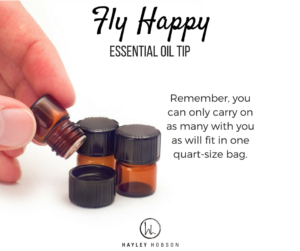Essential Oils Are Generally Regarded as Safe
What part of a plant is edible?
The flower? The leaves? The bark? The peel?
The essential oils from GRAS plants are edible supplements!
When you see the “supplement facts” on a doTERRA bottle, signifies that oil is a generally regarded as safe essential oil (GRAS) are edible supplements. The reason, as a medical doctor that I only ingest doTERRA essential oils that are GRAS is because doTERRA oils are sourced and certified pure and are tested extensively (CPTG).
All doTERRA single essential oils (not the blends) have the MS/GC certificate available online for that the same bottle you ordered and received. You can look it up on the website using the batch number on your bottle. These days oils can come from anywhere in the world after many things have been done to them.
DoTERRA most tested and therefore most trusted.
Certified Pure Tested Grade (CPTG) essential oils!
The essential oils of spices are used for cooking, just as any other generally regarded as safe (GRAS) essential oil for human consumption. The list of GRAS essential oils is available in Section 21CFR182.20 of the Federal Code of Regulations. A good guideline for cooking is one drop of essential oil for each teaspoon of dry spice in a recipe.
Labeling for cooking oils is different than aromatherapy. Note that black pepper oil does not contain piperine, so it lacks the “pepper bite.” Essential oil of black pepper when diffused has been shown to reverse the paralysis of swallowing defects secondary to stroke.
Essential oil of black pepper also blocks substance P, which is a mediator of painful sensations pathways. Oils from herbs such as peppermint and spearmint are very commonly used in the fragrances and flavorings industry. The fragrances and flavorings industry synthesizes tastes and smells for a worldwide market of products, utilizing essential oils and the phytomolecular chemical constituents of essential oils from plants. Since essential oils are classified by the FDA as foods, many of these oils and forms of them have been incorporated into our food and household product chain extensively for years. Research undertaken by the Research Institute for Fragrance Materials studies and documents the effects of these natural and synthetic additives while investigating how to keep them safe for human consumption.
Source of Supply Matters
Therapeutic-grade blends of essential oils and specially blended juices from natural plants are available from many sources. There is tremendous product variety and variability in formulation, quality control, value, and ORAC from company to company.
Whatever the brand, you must ascertain that the products are pure. The issue is quality assurance; not every company is on the alert, for solvents and toxic chemicals that might be present in the raw materials. It is critical that raw materials be thoroughly tested for impurities before they get into supplement products. Standardized extracts and preparations from Europe, India, and China have been sent to product manufacturers that test to ensure purity and find contaminants, necessitating the return of the product. These solvent contaminants have been encountered:
green tea extract containing ethyl acetate, licorice extract containing 1,2 dichloroethane, and curcumin extract containing 1,2 dichloroethane. Purchase products from companies that follow good manufacturing compliance (GMC) guidelines. Check statistics documenting purity and potency from independent laboratory studies. Brunswick and Consumer Labs offers certification of analysis to verify purity and potency from several perspectives. Athletes have concerns about World Anti-Doping Agency (WADA) banned substances. Consumers are concerned about ingesting pesticides. Essential oil products can be verified to be pesticide-free by means of gas chromatography (GC) analysis. Measuring the antioxidant ORAC value of juices and oils verifies increased potency, which translates to higher value and greater benefits. Certain essential oils and juices have the highest ORAC values known on the planet. It is possible that oils and juices taken together obtain a tremendous boost of nutrients and maximize your total dietary ORAC intake.
A diet rich in fruits, vegetables, and cereal grains is chemopreventative (i.e., reduces cancer risk), exemplified by the action of phytonutrients from plants such as lycopene, vitamins C and E, and beta-carotene. These chemopreventative properties coupled with the potentially additive and synergistic effect of the twenty-three thousand pure and mixed isoprenoids from plants, also found in certain essential oils, may further reduce risks of cancer. The oils rich in isoprenoids, such as d-limonene, are found in citrus, and geraniol is found in palmarosa, geranium, turmeric, and atlas cedar. The combination of naturally sourced products produced and tested by the right companies with the proper intended health benefits will deliver all the good health that you deserve.
Critical Caveats of Essential Oils
Generally regarded as safe, (GRAS ) essential oils are listed in books as well as online. Essential oils that have significant benefits and are used in products are not on the GRAS list. There are potential toxicology-related issues associated with specific chemical components of specific essential oils. Oils containing more than 5% methylsalicylates, such as wintergreen and birch, should have child-safety caps. There have been records of wrongful ingestion of essential oils, but these are very rare and isolated medical cases. These case reports are much less frequent in comparison to medical drug errors of wrongful drug administration or adverse drug reactions.
Sense of smell can be affected by medications or vitamin deficiency, causing a loss of sense of smell known as anosmia. All classes of medications from A to Z, whether they are antibiotics, anti-inflammatory agents, anti-Parkinsonian drugs, antihistamines, antidepressants, or anticonvulsants can cause anosmia. It is noteworthy that vitamin A deficiency is a leading cause of loss of sense of smell, though this is reversible with supplementation of vitamin A. Some oils are light-sensitive and can cause pigmentation of the skin after exposure to the sun.
Therefore, certain oils, such as lemon, should not be worn on skin exposed to direct sunlight within a certain time frame, even as long as six to twelve hours. Those oils with high phenol content, such as clove oil, can cause contact dermatitis, sensitivity, or irritation, especially if you work in them constantly. For example, there are a few reports of workers in the essential oils industry, such as perfumers and aromatherapists, who developed contact dermatitis from constant exposure to concentrated tea tree oil.
You can perform a personal skin test using the patch test technique, which is helpful to determine if you could have an adverse reaction to any given product or oil.
Take a 1% dilution and apply the solution to the skin.
Observe over six to twelve hours to evaluate the response.


